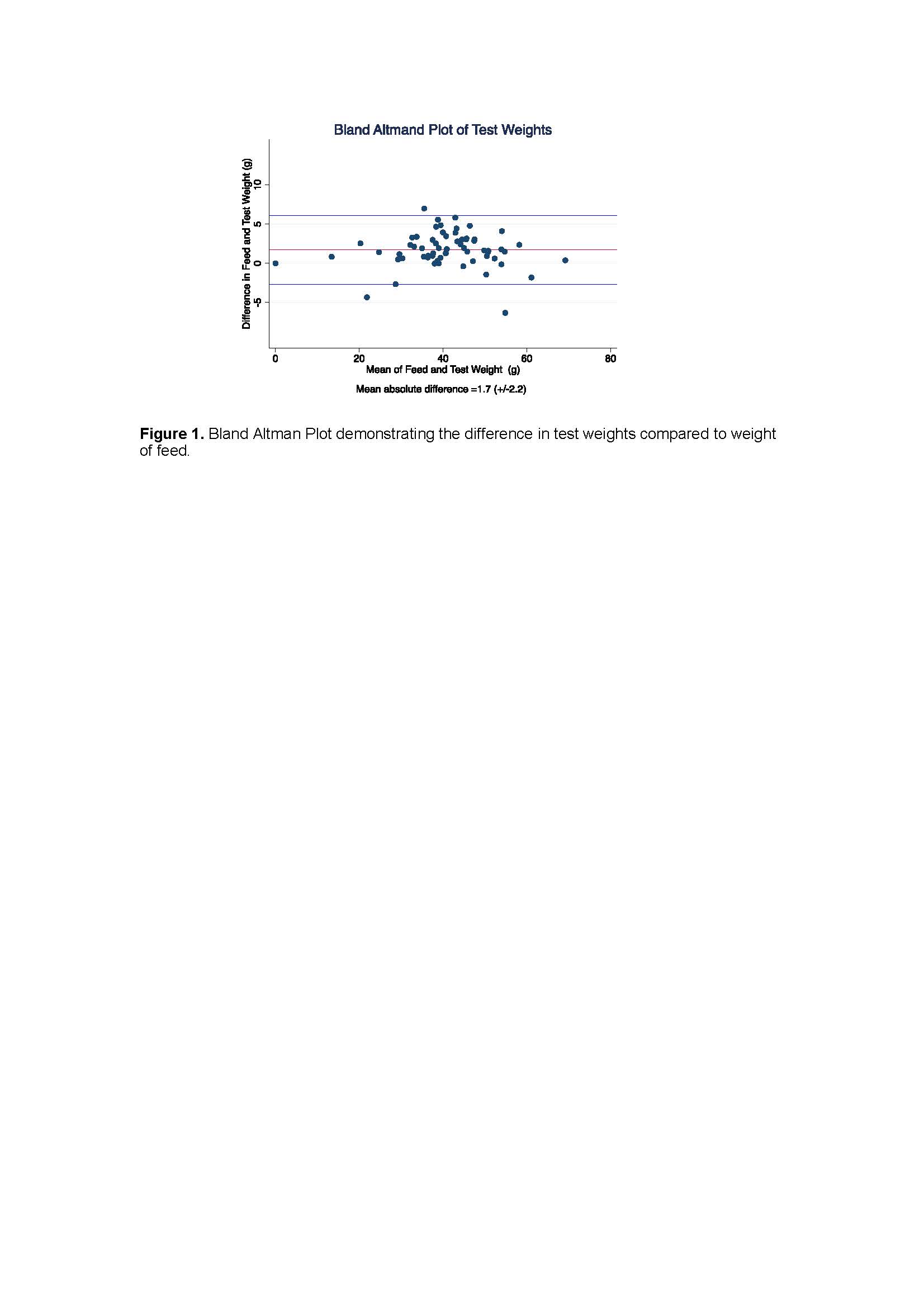Breastfeeding/Human Milk
Session: Breastfeeding/Human Milk 2: Human Milk Feeding
479 - Test weight validation in preterm infants
Sunday, May 5, 2024
3:30 PM - 6:00 PM ET
Poster Number: 479
Publication Number: 479.1694
Publication Number: 479.1694
- MK
Meredith Kinoshita, BMedSc, MB, BCh, BAO (Hons) (she/her/hers)
Specialist Registrar
The Coombe Hospital
Dublin, Dublin, Ireland
Presenting Author(s)
Background: Test weights, defined as the measurement of an infant's breastmilk intake by weighing pre and post feeds, may be useful for preterm infants whose precise intake is clinically relevant. Previous studies accept test weights within ± 5g as acceptably accurate. Larger errors have been documented in those with lower gestational age who are lower in weight with smaller feed volumes. In preterm infants, errors of up to 10g may be clinically relevant, potentially representing a large proportion of feed volume. Concern is that inaccurate measurements and large errors may result in over or under feed supplementation.
Objective: Objectives were to assess agreement of test weights by comparing to known feed weight, measure reproducibility of repeated test weights and to validate a test weight protocol for preterm infants during establishment of breastfeeding.
Design/Methods: This prospective validation study included infants < 35 weeks gestation at birth and had started transition to oral feeds. Those on respiratory support or exclusively breastfeeding were excluded. Each infant had test weights performed for one feed on two separate days. Weighing procedures were designed to minimise effects of monitoring leads and spillage. Milk was weighed pre and post feed to determine the exact weight of feed given and nursing staff independently documented estimated feed volume. Agreement between test weights and feed weights was assessed using Bland Altman and reproducibility was assessed using intraclass correlation coefficient (ICC). Minimal detectable change (MDC) was calculated based on ICC and standard error of measurement.
Results: In 35 infants, gestational age at birth was 32+2 weeks [28+5-33+5] with birth weight 1634g (±670). At test weight assessment, corrected gestational age was 35+5 (±1.4) and weight was 2135g (±354) reflecting timing of oral feed establishment. The mean absolute different between test weight and feed weight was 1.7 (±2.2) with ICC of 0.98. The MDC was 0.96g representing the smallest value that reflects true change rather than measurement error (95% CI). There was strong correlation between estimated feed volume and test weight (r=0.91) but with a larger MDC of 1.8g.
Conclusion(s): Test weights in preterm infants establishing oral feeds demonstrated strong agreement and high reproducibility. Test weights had an smaller MDC than the current standard of estimated feed volume, providing reassurance that test weights are acceptable in preterm infants. Test weights are a valid method of assessing milk intake in preterm infants and may be useful in supporting establishment of breastfeeding.

